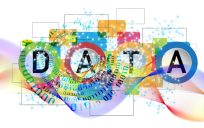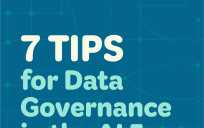In federal finance and human resources, the United States Department of Agriculture (USDA) stands out for its innovative approach to addressing the complexities born from an amalgam of new and legacy IT systems. With a strategic embrace of AI and automation, the USDA has adeptly navigated these complexities to revolutionize human resource tasks and financial operations.
By integrating data from Sam.gov into its internal financial systems, the USDA has not only streamlined payroll and personnel systems, but also introduced efficient self-service options for its employees. This top-down initiative, propelled by a bottom-up drive from USDA’s workforce, highlights a successful combination of enterprise-level strategy with employee engagement. Within six to seven months, the initiative achieved significant cost savings and avoidance of approximately $40 million in taxpayer dollars.
Recruiting and onboarding employees can be daunting for federal agencies due to the various systems involved, many of which are manual. For instance, when an employee receives an offer letter, it can be unclear when to send out the letter for fingerprinting or for the Personal Identity Verification (PIV) card. Automation and AI have made this process more manageable, streamlining workflows and reducing the burden on government HR departments.
The USDA’s journey is a testament to the transformative power of AI and automation in federal agencies. The integration of AI and automation has led to smarter, more efficient systems that significantly impact people, processes and mission areas.
Empowering Employees: USDA’s Formula for AI-Powered Federal Workforce Innovation
To replicate the USDA’s success, federal agencies should follow a systematic approach to integrating AI and automation into their operations:
- Assess and Identify: Agencies should thoroughly evaluate their current IT landscape. This assessment facilitates the identification of opportunities to integrate AI and automation, thereby enhancing efficiency and effectiveness. Understanding the existing infrastructure and pinpointing areas for improvement is crucial for a smooth transition to more advanced technologies.
- Engage and Empower: Encouraging innovation from within ensures that the solutions developed are practical and meet real-world needs. Giving employees the opportunity to contribute ideas and drive change fosters a culture of continuous improvement and innovation. This bottom-up approach complements the top-down strategy, creating a cohesive and motivated workforce. The USDA’s citizen development program empowers employees to innovate using AI and automation, improving processes and efficiency. For example, a USDA employee used AI-powered automation tools to track dam inspections and assess risks, reducing a task that once took weeks to just a few minutes. Previously, inspectors were monitoring dam inspections on a spreadsheet. This initiative, described recently by Malcom Shorter, assistant secretary of administration at the USDA, shows how employee-driven solutions powered by AI and automation can significantly enhance operations.
“Citizen development empowers your employees,” said Shorter during a recent AI conference. “It unleashes the potential of your employees, making them part of the solution for getting things done.”
Shorter also highlighted how providing the right tools and knowledge about AI and automation enables staff to create effective solutions on their own. As a result, employees feel more fulfilled and productive in their careers.
“Most folks don’t believe this, but all good ideas don’t start at the top,” said Shorter. “I have talented employees who now feel better about what they do, who are creating these bots off their desktops because they have the software and understand how to use it,” noting that the USDA also had parameters around AI and automation use.
Shorter also shared that USDA employees are moving away from using spreadsheets for multiple tasks, freeing them up to do higher-value work.
- Implement a Tiered Approach: A tiered approach to AI and automation helps agencies manage complexity and optimize costs. By starting with simpler tasks and gradually moving to more complex processes, agencies can ensure a smooth transition and effective resource allocation. This method allows for incremental improvements and adjustments, reducing the risk of disruption.
- Focus on Interoperability: It is critical for agencies to maintain continuity and maximize the benefits of new technologies. Ensuring that new systems can seamlessly integrate with existing databases and workflows helps avoid disruptions and leverages the full potential of both old and new systems. This integration is key to achieving a cohesive and efficient operational environment.
- Measure and Report: Establishing clear metrics to measure the financial and operational impact of AI and automation initiatives is vital. Regularly reporting on these metrics helps track progress, demonstrate value, and guide future investments. By measuring and reporting on the outcomes, agencies can make informed decisions and continuously refine their strategies to achieve the best results.
USDA’s AI and Automation Overhaul: A Model for Federal HR and Finance Efficiency
The USDA’s citizen development program is a prime example of how empowering employees to innovate can lead to remarkable efficiencies and cost savings. Government HR and finance departments can benefit by adopting similar strategies to streamline processes, enhance decision-making and foster a culture of continuous improvement. By leveraging AI and automation tools and encouraging employee-driven solutions, government HR and finance departments can not only improve their own operations but also set a precedent for innovation across the entire agency.
Todd Schroeder is vice president of public sector at UiPath. An industry professional with 15 years of hands-on experience in public sector technology and leadership, Schroeder has extensive expertise in technology change management, enterprise data management solutions, business intelligence, and big data programs.





Leave a Reply
You must be logged in to post a comment.